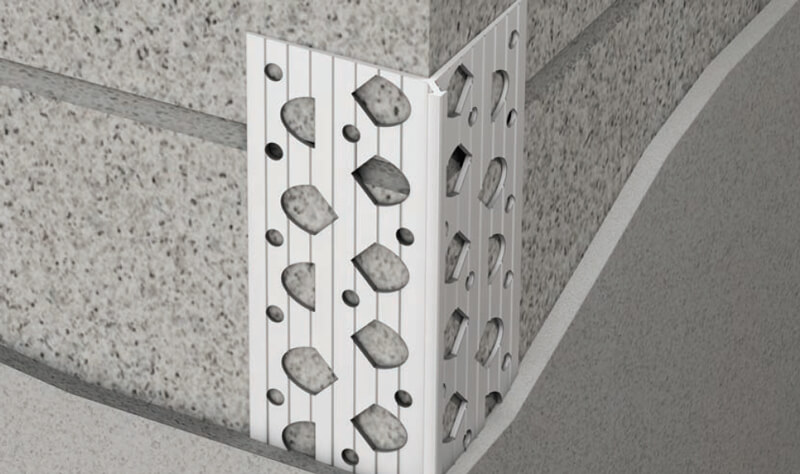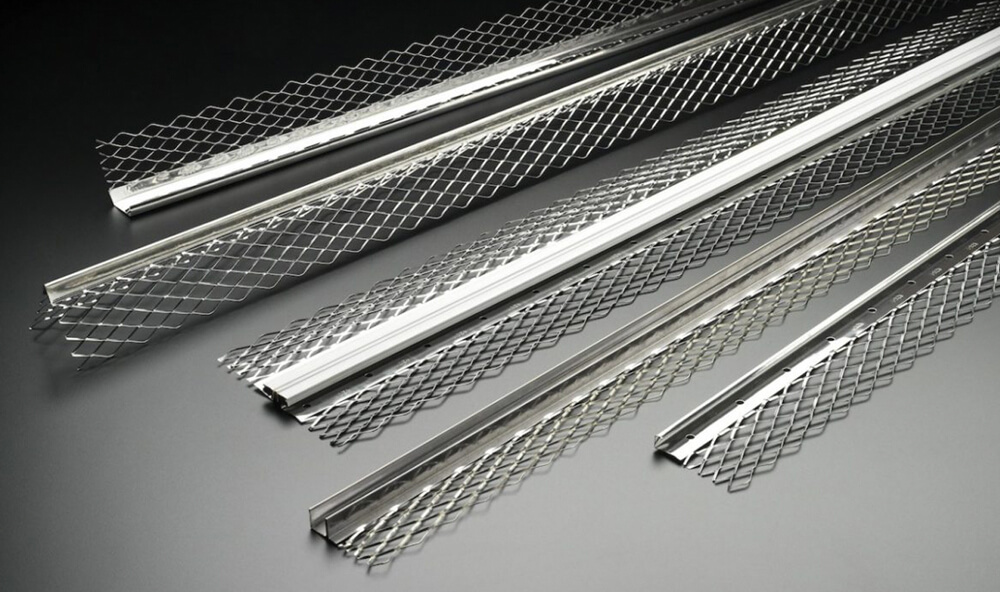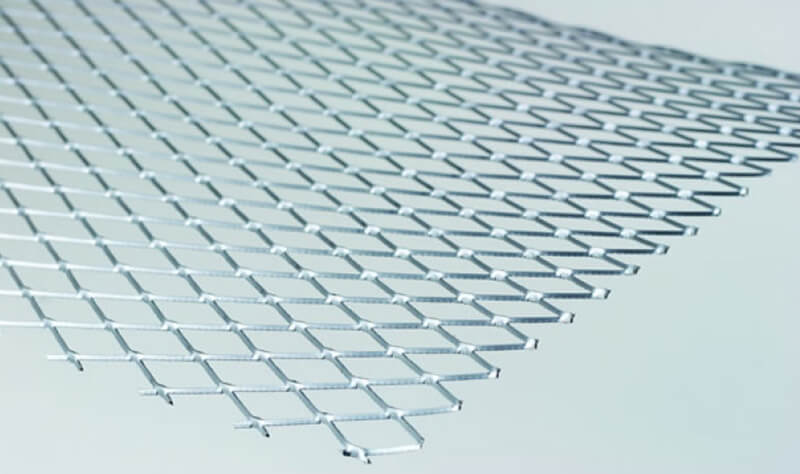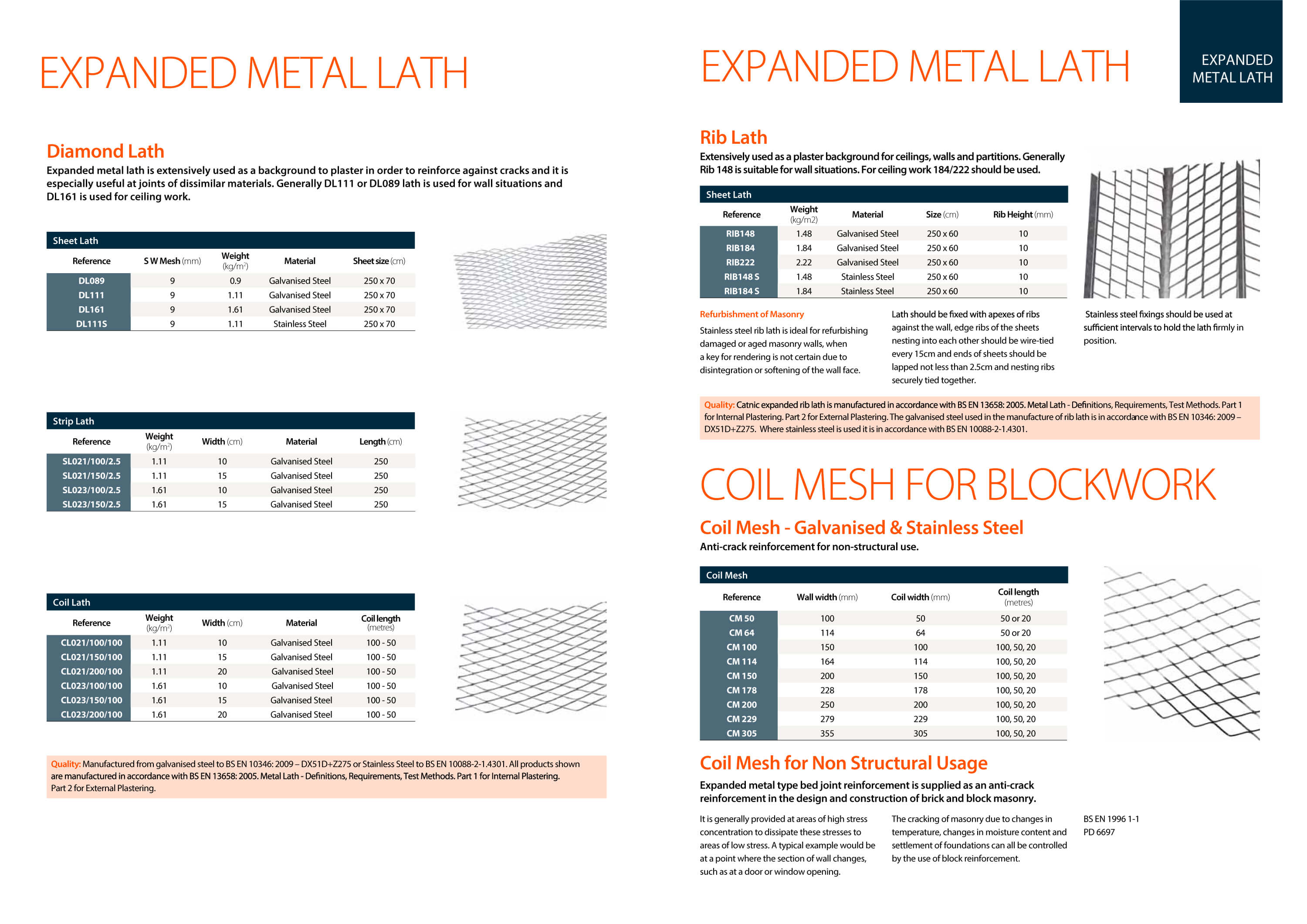

The comprehensive range of Plaster Beads are precision engineered and simple to use. Fixing by nail or plaster dab is straight forward and fast, generating rises, edges, corners and joints that are easy to form and resistant to chipping, cracking and impact damage.
The most appropriate Catnic bead should be chosen to suit the application, required plaster depth and the desired finish of the work.
The application and installation of Catnic beads should be in accordance with BS 5492:1990 Code of Practice for internal plastering and BS 5262:1991 Code of Practice for external renderings.
Catnic beads should be fi xed at a nominal 600mm spacing by embedding with dabs of the same material used for the undercoat or corrosion resistant galvanised nails for galvanised bead and stainless steel nails for stainless steel bead.
Beads may be trimmed to length using tinman’s shears across the wings and a fine toothed saw across bead noses.
Use one of the following methods to fix Catnic angle beads and plaster stop beads:

1. Using galvanised or stainless steel nails (compatible with bead material) complying with BS 1202: Part 1, fi xed at a maximum of 600mm apart. When nailing to a solid background the line of the bead will follow the line of the background.
2. Pressing the bead onto dabs of the same material as the undercoat, dabs should be applied at a maximum of 600mm apart. This method will even out minor irregularities in the line of the background, although the line of the bead will tend to generally follow the line of the background.
3. When beads are used with metal lath backgrounds, galvanised or stainless steel tying wire may be used to secure the beads in position. Soft galvanised wire to BS 443 and soft stainless steel wire
complying with BS 1554 should be used to match the bead and lath materials. All wires should be twisted tightly and the ends bentaway from the finished face of the coating.




